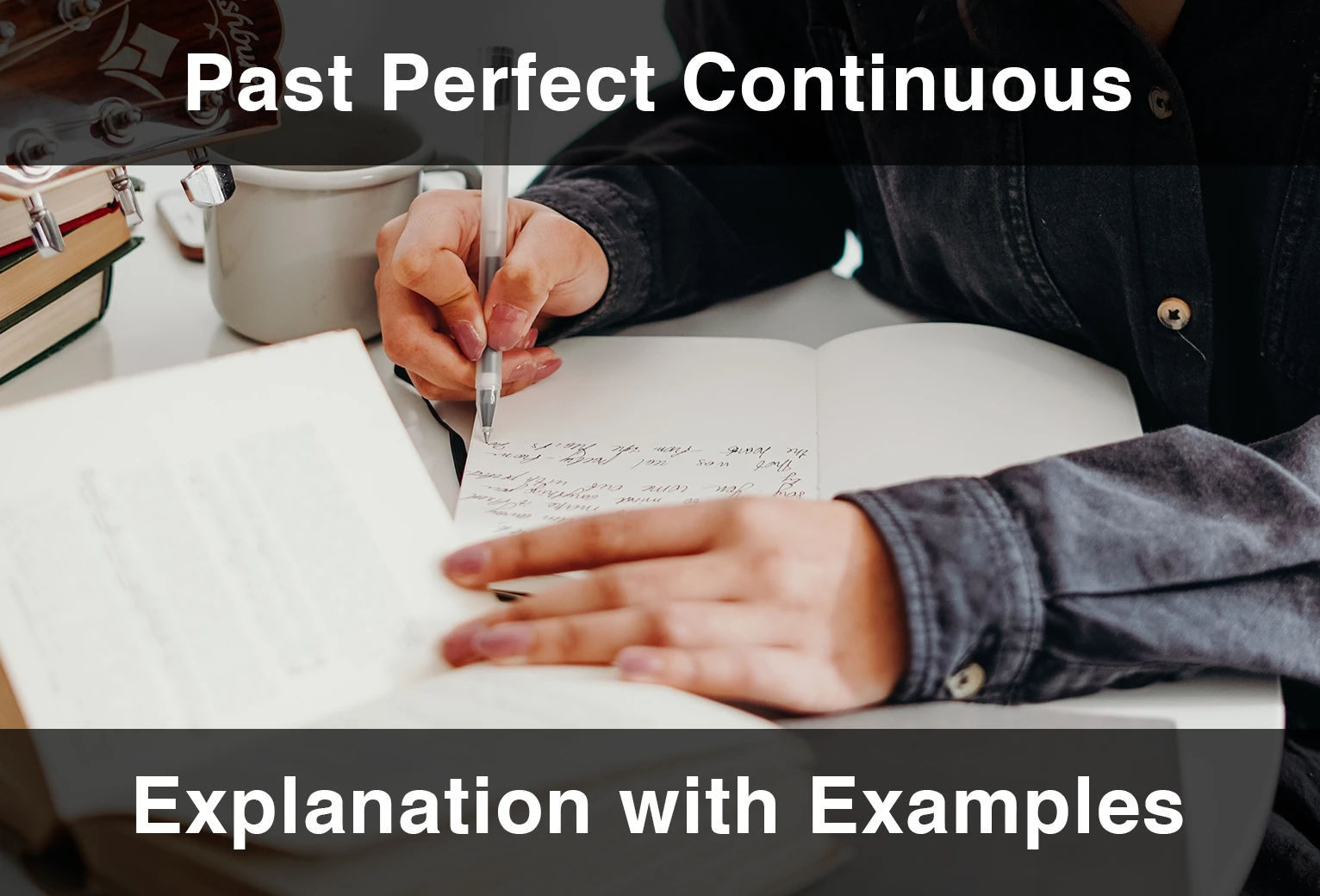To express ourselves fully in English, we need to learn the tenses first. Tenses are what determine the time which the action takes place. Tenses change the form of verbs to do so. Learning the tenses will help us speak English better and easier. This guide is prepared to help you learn all about the Past Perfect Tense.
What Is Past Perfect Tense?
We use the Past Perfect Tense to reference actions or events that happened before another action that also happened in the past. Similarly, we can use it to express a completed action before another action in the past, report past events or give background information in narratives, talk about hypothetical conditions or actions that could have happened in the past, but did not, and express regrets or wish for a different past outcome.
What Are the Grammar Rules of Past Perfect Tense?
The grammar rules of the past perfect tense involve the correct usage of the auxiliary verb “had” and the past participle form of the main verb. Here are the detailed grammar rules for constructing sentences in the past perfect tense:
Auxiliary verb “had”: The past perfect tense always requires the auxiliary verb “had” as the helping verb. It remains the same for all subjects (I, you, he, she, it, we, they).
Past participle form of the main verb: The main verb in the past perfect tense should be in its past participle form. Regular verbs form the past participle by adding “-ed” to the base form (e.g., work → worked, play → played). Irregular verbs have specific past participle forms that need to be memorized (e.g., go → gone, eat → eaten).
Time marker: The past perfect tense is often used with time markers to indicate the sequence of events in the past. Common time markers include “before,” “after,” “when,” “once,” “until,” “already,” “never,” and “just.”
Sequence of events: The past perfect tense is used to express an action that occurred before another action in the past. It emphasizes that the action was completed before the other action took place. The action described by the past perfect tense is further back in the past than the other action.
Subject-verb agreement: The past perfect tense follows the subject-verb agreement rule, where the verb form should agree with the subject in terms of singular or plural form. For example, “I had finished” (singular subject) and “They had finished” (plural subject).
Negative and interrogative forms: To create negative sentences in the past perfect tense, place “not” after “had,” such as “had not” or “hadn’t.” In interrogative sentences, invert the subject and “had,” such as “Had you finished?”
Here are some example sentences illustrating the grammar rules of the past perfect tense:
She had already eaten dinner before she went to the movie.
They had never seen such a beautiful sunset until that day.
Had you finished your work before the meeting started?
The train had left the station by the time we arrived.
He had studied Spanish for five years before he traveled to Spain.
By following these grammar rules, you can construct sentences in the past perfect tense accurately.
How To Construct Sentences in Past Perfect Tense
You can construct positive, negative and interrogative sentences in Past Perfect Tense. Constructing positive, negative, and interrogative sentences in the past perfect tense follows specific rules. Let’s look at each type:
Positive Sentences:
In positive sentences, we use the subject followed by the auxiliary verb “had” and the past participle form of the main verb.
Subject + had + past participle + (object/complement)
Examples:
She had finished her homework.
They had visited the museum.
I had studied for the test.
Negative Sentences:
In negative sentences, we use the subject followed by the auxiliary verb “had not” or the contraction “hadn’t,” and then the past participle form of the main verb.
Subject + had not / hadn’t + past participle + (object/complement)
Examples:
She had not finished her homework.
They hadn’t visited the museum.
I hadn’t studied for the test.
Interrogative Sentences:
In interrogative sentences, we invert the subject and the auxiliary verb “had” and place them at the beginning of the sentence. Then, we use the past participle form of the main verb.
Had + subject + past participle + (object/complement)
Examples:
Had she finished her homework?
Had they visited the museum?
Had I studied for the test?
NOTE: In both negative and interrogative sentences, the contraction “hadn’t” can be used instead of “had not” for simplicity and informality.
Past Perfect Tense Positive Sentences
To write a positive past perfect tense sentence, we use the formula we learned above. The formula is subject + had + past participle. Here is a table and a few examples to help you better understand.
| Subject | Auxiliary Verb (have) | Verb |
|---|---|---|
| I/You/He-She-It/We/They | had | V3 |
They had visited İstanbul twice before they decided to return home.
The company had already achieved its sales target for the year.
He had studied Korean for two years before he traveled to Korea.
By the time we arrived, the show had already started.
Negative Past Perfect Tense Sentences
To write a negative past perfect tense sentence, we use the formula we learned above and add a negative adverb. The formula is subject + had + not + past participle. Here is a table and some examples to help you better understand.
| Subject | Auxiliary Verb (have) | Negative Adverb | Verb |
|---|---|---|---|
| I/You/He-She-It/We/They | had | not | V3 |
We hadn’t seen each other until this year’s festival.
The team hadn’t scored any points until the latter half of the match.
He hadn’t visited his grandparents’ new house until his vacation last week.
They hadn’t seen each other since they graduated from high school.
Interrogative Past Perfect Tense Sentences
When writing interrogative past perfect tense sentences, we use the formula had + subject + past participle and had + subject + not + past participle. Here are a few tables and some examples for you to better understand.
Positive Interrogative Past Perfect Sentence Examples:
| Auxiliary Verb (have) | Subject | Verb |
|---|---|---|
| Had | I/You/He-She-It/We/They | V3 |
Had they visited that museum before it closed for renovations?
Had the team scored any goals before the opponent’s comeback?
Had he traveled to Germany before his graduation?
Had you finished reading the book before class?
Negative Interrogative Past Perfect Sentence Examples:
| Auxiliary Verb | Subject | Negative Adverb | Verb |
|---|---|---|---|
| Had | I/You/He-She-It/We/They | Not | V3 |
Hadn’t we traveled to Italy before our wedding?
Hadn’t the player scored any goals before the match ended?
Hadn’t he studied for the exam before doing his homework?
Hadn’t you completed the task before starting a new one?
Short Answer Questions in Past Perfect Tense
It’s possible to not give full sentence answers when answering a question in Past Perfect Tense. To give short answers, we need to write Yes/No + subject + had/had not. Here are some tables and examples to help you better understand.
Positive Short Answer Questions in Past Tense
| Modifying Adverb | Subject | Auxiliary Verb (have) |
|---|---|---|
| Yes | I/You/He-She-It/We/They | had |
Had she already eaten the cookies before dinner? Yes, she had.
Negative Short Answer Questions in Past Tense
| Modifying Adverb | Subject | Auxiliary Verb (have) |
|---|---|---|
| No | I/You/He-She-It/We/They | had not (hadn’t) |
Hadn’t he studied for the exam before doing his homework? No, he hadn’t.
Interrogative Past Perfect Tense Sentences Using WH- Questions
We can form Past Perfect Tense interrogative sentences using question words to ask more specific questions. These question words include “How”, “What”, “When”, “Where”, “Which”, “Who”, and “Why”. To form a Past Perfect Tense interrogative sentence with question words, we write question word + had + subject + verb. Here is a table and some examples to help you better understand.
| Question Word | Auxiliary Verb (have) | Subject | Verb |
|---|---|---|---|
| How/What/When /Where/Which/Who /Why | Had | I/You/He-She-It/We/They | V3 |
Which shoe had I bought before coming to your birthday party?
Where had she gone before her mother called?
How hadn’t we fallen into the pool before we jumped?
Why had you stopped taking your medicine before you healed?
Temporal Adverbs (Adverbs of Time) With Past Perfect Tense
We can use temporal adverbs if we want to further specify what time the actions in question took place. Commonly used temporal adverbs with Past Perfect Tense are “before”, “already”, “since”, “till”. Here are a few examples to help you better understand.
Had I called you before you left the house?
Hadn’t you already booked the tickets?
It hadn’t snowed since last January.
We hadn’t agreed to meet up till last Monday.
Frequently Asked Questions about Past Perfect Tense
What is the Difference Between Past Perfect Tense and Simple Present Continuous Tense?
The past perfect tense refers to a completed action before another action that took place in the past, while the present continuous tense describes an action that started in the past and is continuing in the present.
What is the Difference Between Past Perfect Tense and Simple Past Tense?
The simple past tense refers to a completed action in the past that has no connection to the past or present, while the past perfect tense describes a completed action that happened before another action in the past.
What is the Difference Between Past Perfect Tense and English Future Tense?
The past perfect tense refers to completed actions in the past that take place before another action in the past, while the future tense refers to actions that have not happened yet in the future.
What is Past Perfect Tense formulation?
To form a sentence in Past Perfect Tense, we use the formula of subject + had + past participle (V3).
Would you like to put what you have learned into practice? You can access everything you need to learn English on a single platform! With 25-minute one-on-one live English lessons, 40-minute group lessons, more than 30,000 interactive videos, vocabulary learning tools, AI-supported tutor MiMi, quizzes, and interactive activities, EnglishCentral offers its users a personalized and quality education plan at an affordable price. How about registering for EnglishCentral now and starting to learn English?











